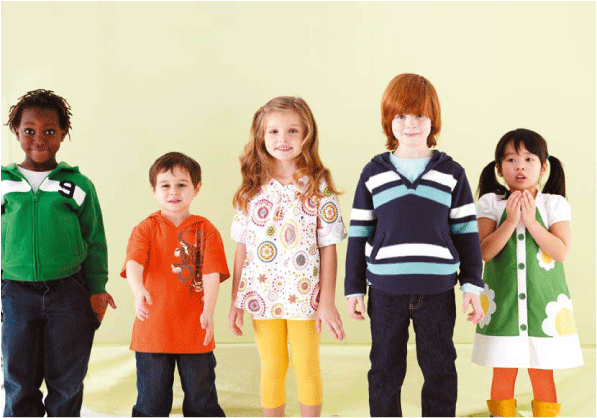

Big & Little
 |
If your child starts to feel awkward about his height, set him straight before the situation gets blown completely out of proportion.
By Maureen P. Sangiorgio
I’ve never seen a kid so excited to go anywhere as my neighbor’s 5-year-old son, Sam, was on his way to his first karate lesson. He had been talking about it constantly for months—all the different belts, the cool outfit, learning some Korean words—and, of course, showing off his chops and kicks. I thought that he’d have a blast. On the car ride home, he told his mom that he didn’t want to take karate lessons anymore. The reason: He was the smallest kid in the class. “Even the girls were bigger,” he sulked.
Sure, Sam is on the small side—he always has been—but it hadn’t seemed to bother him until now. “While many children as young as 3 begin to notice differences in appearance, it’s not until they get to be 5 or 6 that they start to feel uneasy about them,” says Michael Lewis, Ph.D., distinguished professor of pediatrics and psychiatry at Robert Wood Johnson Medical School in New Brunswick, New Jersey. “Kids around this age want to be the same size as their peers.”
That’s practically impossible. There’s about a five-inch span in what’s considered “normal” height for a 5-year-old, according to the government’s growth charts (see “Measuring Up”). And kids in classrooms or after-school activities can be a year or even two apart in age. Depending on whom your kid is hanging around with, he’s bound to feel self-conscious about his size, but you can help him not sweat the small (or tall) stuff.
Give Him a Science Lesson
Explain to your child that how tall he’ll be depends a lot on the size of you and his father. “Kids assume their height is totally random,” says Stuart Goldman, M.D., a psychiatrist at Children’s Hospital Boston. “But when they find out it’s related to the size of their family members, it makes them feel better about themselves.”
Dare to Be Different
Wear a big cowboy hat the next time you run errands with your child. Or put on two different colored socks when you get dressed in the morning. When your kid asks you why you’re acting so silly, you can tell her that you were tired of getting dressed in the same old thing. “This is a perfect launching point for a discussion with your child about how wanting to look exactly like everyone else is boring,” says Kristin Lagattuta, Ph.D., associate professor of child psychology at the University of California, ?avis.
Take it one step further and ask your child to imagine what it would be like if everything in the world—the sun, the moon, the planets, the sky, the people—all looked the same. Says Dr. Lagattuta: “Chances are, she’ll come to the conclusion that being identical really isn’t so great.”
Deal With Teasing
Talk about the fact that all kids get taunted about one thing or another, even though it isn’t nice. “You’d be surprised by just how many children think they’re the only one in their class who ever gets picked on,” says Dr. Goldman. Then work with your child on a smart (but not nasty) comeback to use. Unemotional responses usually work best since a bully is trying to make your child feel bad.
A couple of good options: “Yep, I’m short just like my mom” or “So what?” Also reassure your child that her size won’t prevent her from being well liked—even when she gets a little older. A recent study from the University of Michigan of 712 sixth graders found no difference in friendships, popularity, and reputation based on a kid’s height.
Watch Your Own Mouth
You’ve probably been talking about the differences in kids’ sizes with your friends since you had your first baby. Most likely your child has overheard you say something like, “Is she small for a 6-year-old?” or “He’s getting so big. How tall is he now?”
Bringing up the topic a lot—even if you’re not discussing your own child—can make him think that size differences matter to you, explains Dr. Lagattuta. If you believe that your child already has that impression, let him know that they don’t. Also, tell him that kindness, honesty, and compassion, rather than looks, are what are truly important in life.
Stave Off Stereotypes
By the time kids are in first grade, they’ve started to pick up on how TV characters are portrayed based on their size. “For instance, kids start to associate shorter people with being weak and babyish,” says Dr. Lewis. If you see this happening in a show you’re watching together, be sure that your child understands that the story is make-believe.
Sneak In Lessons at Storytime
Pick up a couple of picture books that will reinforce the positive messages about appearance that you’ve been giving your child. Here are two irresistible tales to check out the next time you head over to the library: What I Like About Me! by Allia Zobel Nolan, and One Green Apple, by Eve Bunting. “Read them together, and then ask your child to tell you what she thought about the books,” says Dr. Goldman. “Talking about the message will help her to remember it, and she’ll also be better able to relate it t? herself.”